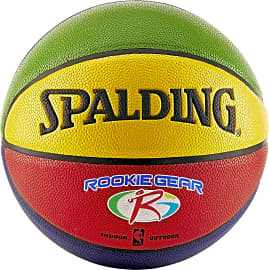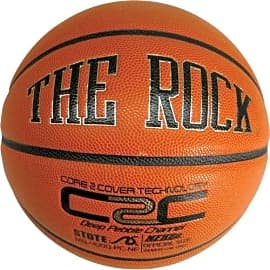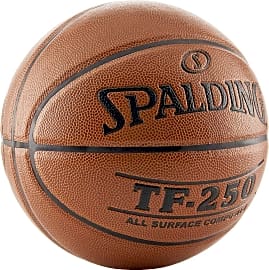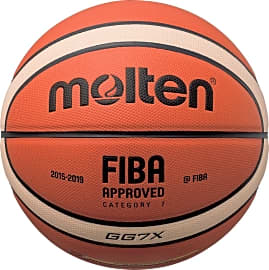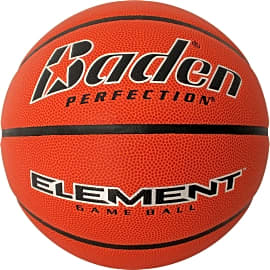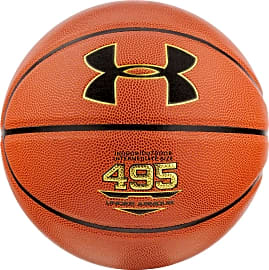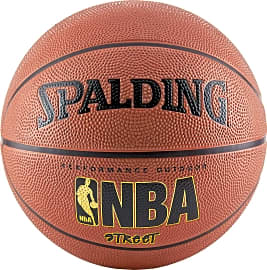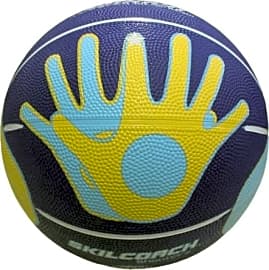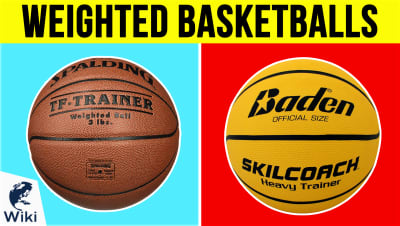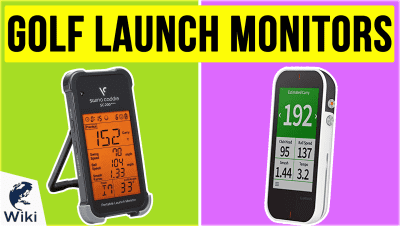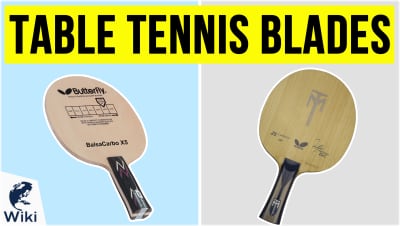The 10 Best Basketballs

This wiki has been updated 39 times since it was first published in April of 2015. Shooting hoops is a lot more fun when you have the right gear, as pretty much every aspect of the ball can really affect your game. Once you have chosen the best one for your local league, court, and style of play from our list of indoor and outdoor models, you should have no trouble nailing step-back three-pointers, to the dismay of even the most determined defenders. When users buy our independently chosen editorial choices, we may earn commissions to help fund the Wiki.
Editor's Notes
October 09, 2020:
Prior to this latest update, our list featured top-notch selections that are still current favorites, both among seasoned players and newbies. We decided to round it out with a few more choices geared toward beginners and youths in training, and were able to do so since the Spalding Replica became unavailable and the Spalding Zi/O suffered numerous quality complaints in recent months.
We brought on the Baden SkilCoach for those who need help with shooting. While mostly geared toward kids and teens, this one can help anyone who needs a refresher on hand placement, whether a lefty or a righty. It sports a wound core for reliable air retention and a true bounce and is relatively durable enough to withstand lots of training sessions whether indoors or out. That being said, it tends to lose air more quickly than some others.
We also incorporated the Spalding Rookie into the mix. The opposite of a weighted basketball, which is ideal for building strength, this one is lighter than other youth balls to help smaller athletes train easier and get a grasp on ball handling and proper shooting form. It's an ideal choice if you're trying to transition your children out of hobby playing into a more serious attitude, as it will help them gain confidence and get past some of the obstacles that stop kids from continuing with this sport.
April 14, 2019:
First of all, if you can avoid it, don't waste your time with the ultra-cheap, smooth-rubber "basketball-shaped objects." They last for a few days of outdoor play before they discolor everyone's hands and lose most of their grip. Incidentally, don't bother with the Spalding NeverFlat, which generally goes flat pretty quickly, and has a very bad reputation among avid players.
With those warnings out of the way, if you ask around, you'll find a few options that ballers simply rave about. The Wilson Evolution is one of those. If you frequently play in a gym and want the best, it's likely the one to buy -- just be aware that it might not last as long as other choices, but only because players in every pickup game will continue to choose yours as the game ball. It's that popular. Alternately, The Rock has a similarly fantastic reputation, and some say it's a little bit firmer than the others. And while it is somewhat a matter of taste, some also find the Baden to be of the same top-notch quality.
Now, on to Spalding. They manufacture the actual, real, official NBA game balls. It's hard to determine if each individual run of "Official" balls are really identical to what the NBA uses, partially because NBA balls are apparently hand-selected on a case-by-case basis, because huge organizations can afford to pick through as many of these wildly expensive models as they want. Nonetheless, for an almost entirely authentic experience, consider the Spalding Replica, because it does look and feel very close to the real thing. Otherwise, the Street, Zi/O, and TF-250 are good choices because they're reliable and relatively inexpensive. The TF-1000 was at one time the most beloved ball on the market, but apparently it's sorely lacking in quality as of the last few years.
And if you're looking for something in a different brand but with similar affordability, the Under Armour is a good choice, while the Molten should be reserved for those who want to simulate the FIBA experience, as it's just a hair smaller than official NBA regulations.
Special Honors
LeBron 18 Competitive ballers know having the proper footwear is a key ingredient for success. Among the scores of thoughtful designs made in collaboration with famous players are the LeBron 18's. Crafted to facilitate force and acceleration while absorbing impacts, they feature combined cushioning underfoot, a stabilizing molded TPU heel counter, air units embedded in the tongues for extra padding, and much more. nike.com
When To Buy a Leather Basketball, When To Buy a Rubber One
Most people, when shopping for a basketball, tend to gravitate toward what is considered to be a regulation model.
Most people, when shopping for a basketball, tend to gravitate toward what is considered to be a regulation model. A regulation basketball has a leather exterior with a dimpled surface that allows for an ample grip.
In addition, any regulation ball should weigh approximately 1.7 pounds and measure 30 inches in circumference, with slight variations depending on how much air that ball has in it. The NBA uses a regulation ball that is manufactured by Spalding, but companies like Franklin, Wilson, and Rawlings manufacture their own regulation basketballs, as well.
There is a drawback to certain regulation basketballs in that their leather panels may have been designed specifically for indoor play. More importantly, asphalt may cause a leather ball to wear, or even peel. Rubber balls, on the other hand, are much more geared toward use in a park, or on an outdoor court. The bright orange color of a rubber ball is great for playing at night, as well.
Rubber balls are less expensive, and they bounce higher if they're fully inflated, though leather balls are more durable, and they're less prone to being punctured. The majority of starter balls are made out of rubber, while there is a wide range of intermediate balls (both leather and rubber) that have been designed for indoor and outdoor play.
Several Drills To Improve Your Basketball Skills
If you want to get better at basketball, chances are you'll need to practice. Practice can be collaborative, and practice can be fun, but practice almost always begins by zeroing in on a handful of drills, the type that will allow you to build a foundation, and then progress as you continue along.
With that in mind, set up a line of orange cones, and weave your way through them while dribbling the ball.
First things first: a player needs to be able to dribble before he can shoot. With that in mind, set up a line of orange cones, and weave your way through them while dribbling the ball. The cones are an essential part of this drill in that they stand just tall enough to keep you from cheating, and yet they're soft enough to prevent you from getting hurt. As your dribbling improves, you can work on alternating hands. You can also increase the difficulty level by shortening the distance between each cone.
The most basic passing drill involves scissor-jumping your way down the court while touch-passing a basketball back and forth with a partner. This drill is meant to improve speed and accuracy. But over time, you and your partner can expand to practicing bounce passes, one-hand passes, and perhaps even fast breaks, as well. In the event that a partner isn't available, you can still complete a similar drill by bouncing the ball against a wall.
Shooting drills are a matter of expanding one's range while adjusting weak mechanics. The most basic shooting drill involves marking off several spots around the perimeter. Every time you've completed a full rotation, double back around the arc. As your scoring percentage increases, expand the perimeter a little further. You'll improve your outside game by sharpening the range on every shot.
A Brief History of Basketball (By Way of Its Founder)
The first-ever basketball game was played as part of a YMCA gym class that took place during December of 1891. This class, which was moderated by a Massachusetts physician named James Naismith, consisted of 18 boys, who had been divided into a pair of nine-player groups. Naismith instructed that the objective of the game was to bounce, or dribble, a soccer ball before passing it, or shooting it toward one of two peach baskets, which had been set up along opposing sides of the YMCA hall.
Unfortunately, Dr. Naismith never got to see an NBA game played.
Over the next few months, Naismith would facilitate a number of scrimmages. These early matches would provide the impetus for Naismith's 13 Basic Rules of Basket Ball. Among these rules was the notion that a soft leather ball should be used to minimize injury, that a player could not run while holding the ball, and that it should be a violation for any player to directly block the opposing team's basket.
The first-ever "basket balls" were paneled in leather and stitched like footballs along the cross-section. These balls were centered around a rubber bladder which was filled with air, enabling the ball to bounce with uncharacteristic lightness.
Throughout the first third of the 20th century, Dr. Naismith continued to hone the regulations of his game. Manufacturers, meanwhile, began to develop balls that were more rigid, dynamic, durable, and player-friendly. Basketball flourished as an amateur sport, with several colleges developing their own basketball clubs (Naismith famously founded the men's basketball program at the University of Kansas in 1898).
Basketball was introduced as an Olympic sport in 1936. One decade later, the NBA was formed. Unfortunately, Dr. Naismith never got to see an NBA game played. Naismith died of a brain hemorrhage in 1939. He was 78 years old.


